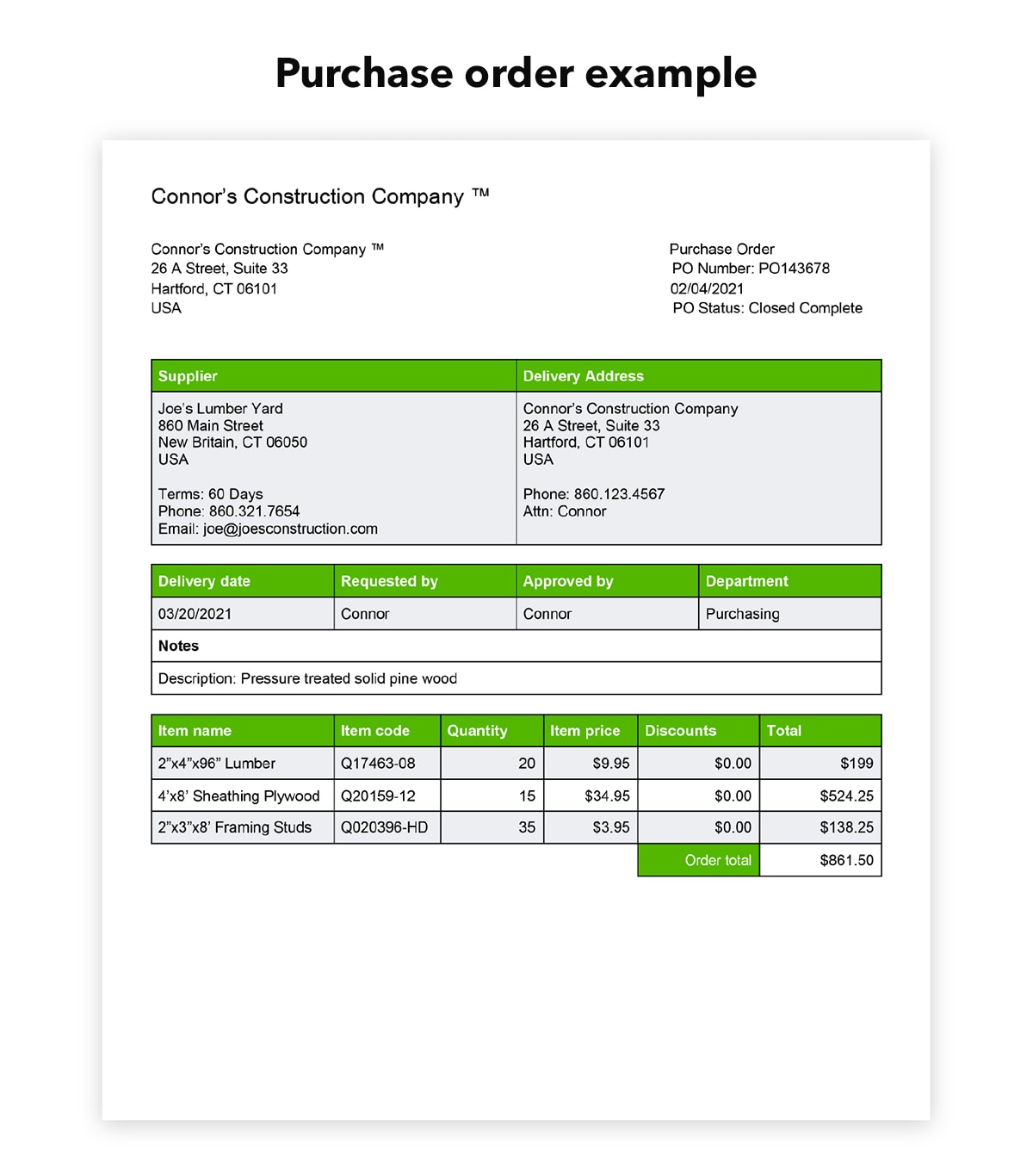Purchase orders vs. invoices
If you’re a new small business owner, you may be confused about the difference between purchase orders and invoices. While they both sound like they perform the same function, they’re quite different from each other.
A purchase order is initiated by the buyer. On the purchase order, the buyer makes a list of the goods requested from the seller, whether it’s a product or a service. The buyer also lists the items, model numbers or SKUs, along with the quantity, delivery date, and price per unit. The more detail is included in a purchase order, the better.
Once a vendor receives a purchase order, they will deliver the purchased items before payment.
On the other hand, invoices are initiated by the seller to collect payment. An invoice is a document a seller uses to request payment from the buyer. When a vendor delivers a product or service, they send an invoice that outlines how much the buyer owes and the payment terms. Similar to how a purchase order has a PO number, invoices have an invoice number. This number is used for tracking purposes for both the buyer and seller.
For example, let’s say Connor owns a construction business and needs 100 sheets of plywood. He will create a purchase order listing how much plywood he needs and send it to his local lumber yard. His local lumber yard will then deliver the plywood and send an invoice detailing how much he owes and asking for payment.
While purchase orders and invoices differ, they do have some similarities. Both purchase orders and invoices include:
- Order details
- Mailing address
- Price
- Contact information
In addition, the PO number is usually listed on the invoice as a way to compare what the buyer ordered and what they’re receiving.
Bottom line: The purchase order is the confirmation of an order, while an invoice is a request for payment.







